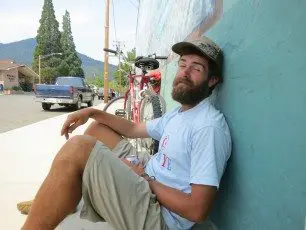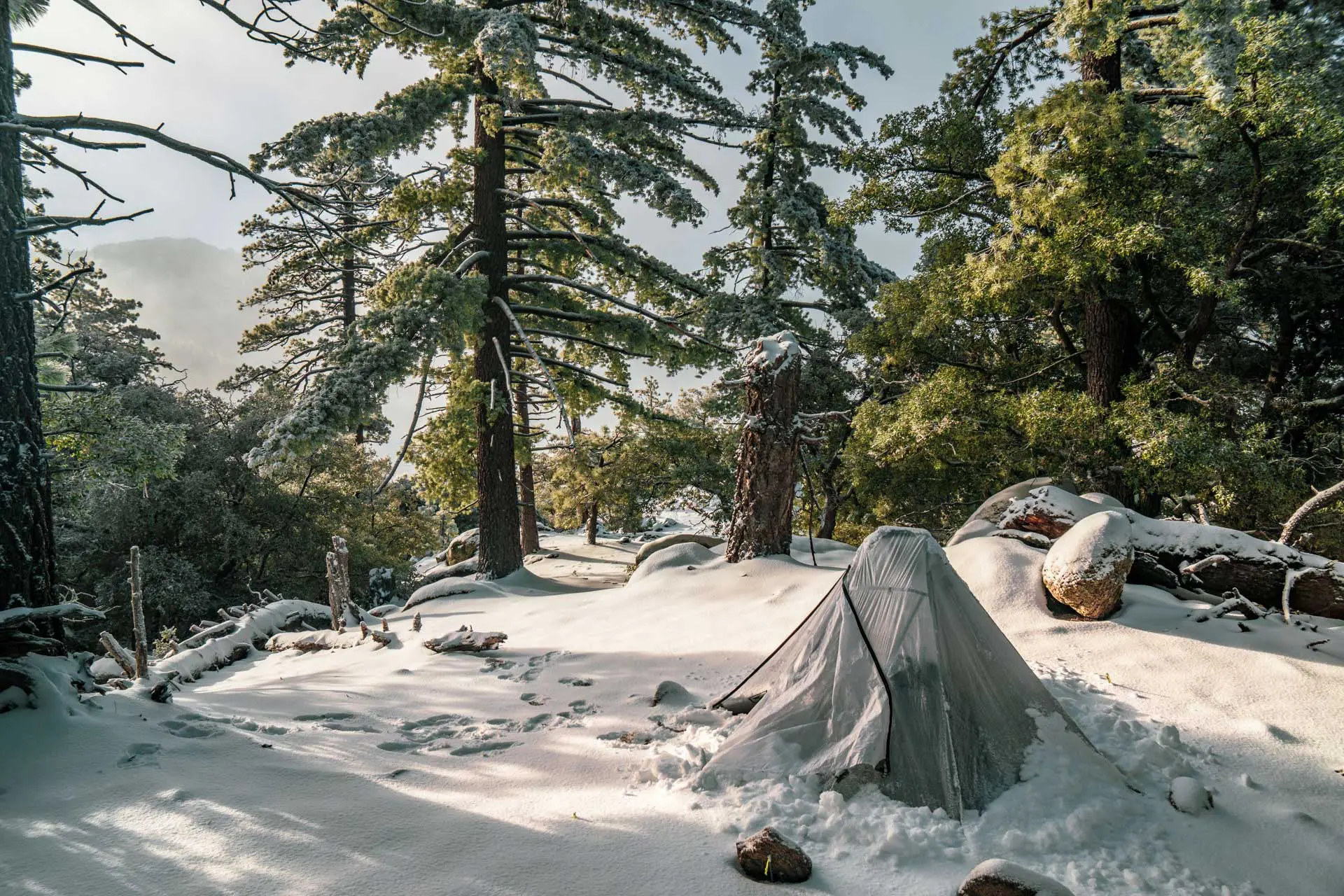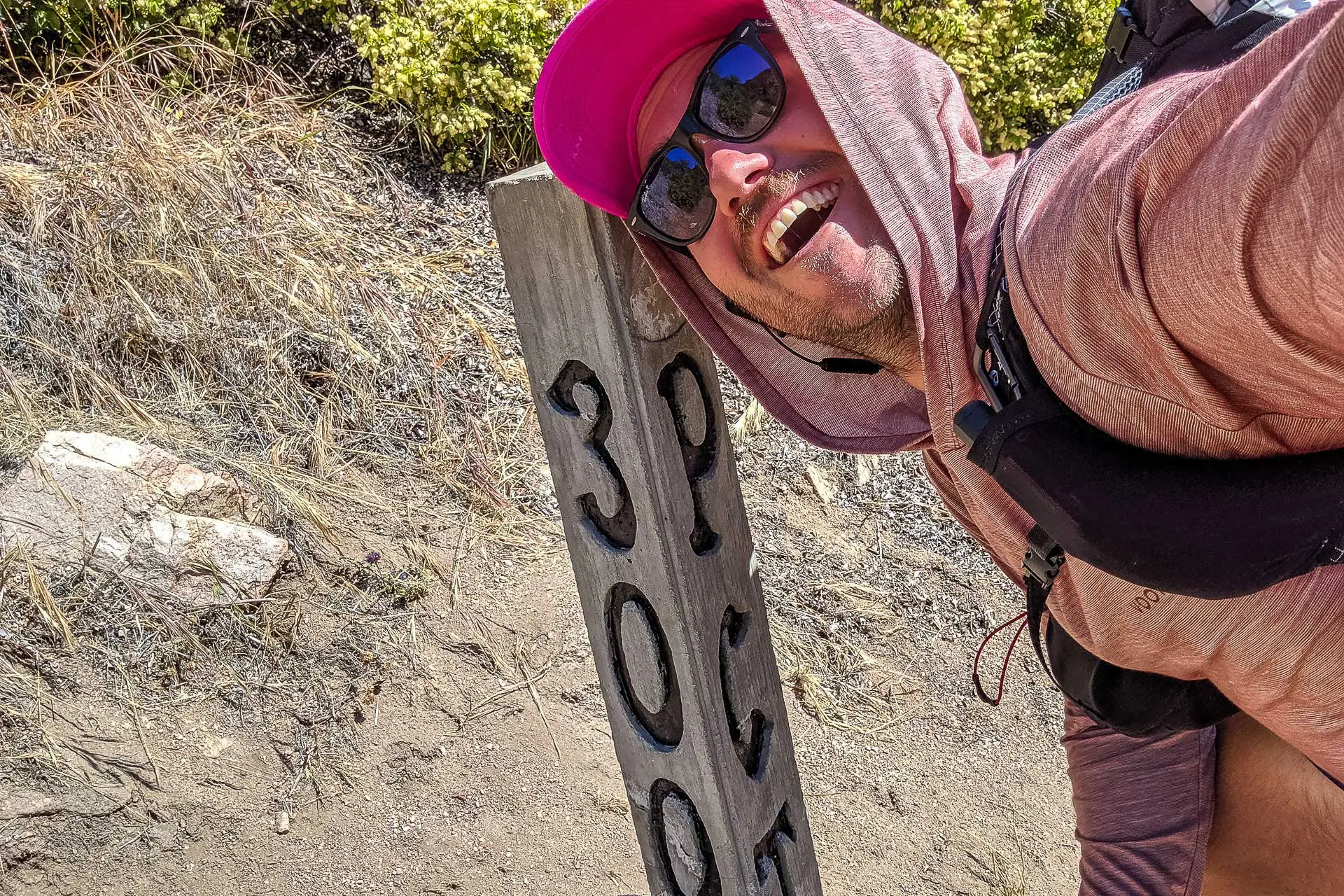Choosing Footwear for a Long Distance Hike
Shoes are like love. They are unique to each person, and without them, this cruel world will chew you up (love protects against this happening, right?).
During the first few weeks of walking a long-distance trail (such as the Appalachian Trail, Pacific Crest Trail, or Continental Divide Trail), you will meet other excited souls starting their walking tours as well.
As everyone’s legs turn from limp noodles to tree trunks, the conversation often turns to feet. Few who start a thru-hike have ever depended on their feet so drastically and consequently, underestimate the importance of choosing the best footwear to keep their feet healthy and performing.
If you’re thinking about doing something crazy like walking from Mexico to Canada, here are some tips on choosing the right footwear for your needs.

THE MINDSET OF A SHOE TESTER
All hikers have unique feet, walking styles, and weight carried.
On top of that, trail conditions vary, and the right shoe for the Appalachian Trail may not be best for the Pacific Crest Trail. Here are some general observations listed by importance about what to look for when trying on footwear (try on as many as you can!).
- FIT | A trail shoe will fit a bit differently than what most are used to. Since your feet will swell as you pound them on dirt, sand, and rock, you want lots of width in the toes. When you take a step can you feel your toes spread naturally, or are they crammed together (toe blisters are a #1 hike killer)? Is your heel locked in? Does the sole totally support your foot shape? Are there any potential hot spots? When you take a step do you feel confident?
- SOLE | Most footwear has an exaggerated heel-to-toe drop. This means when standing, that your heel is propped up a number of millimeters higher than your toe. This information is not usually on the box, so you might have to get out the smartphone. Try walking around barefoot for a few minutes, then put on the shoes, take a deep breath, and try to walk as naturally as possible. Does your heel drag or strike the floor before it should? If so, you may want to try something with a more natural, minimal drop. If the beefy heel feels good, follow your gut. Lastly, how much sole is there? Do you feel every crack on the ground or is there a rock plate in there? On a well-groomed trail, protection is worth compromising for ground feel. On the other hand, on loose, rocky terrain, you don’t want your feet to bruise.
- DURABILITY | Examine potential weak points. Commonly, the sole will separate at the toe and heel, or the top material will develop holes from rubbing. Does the footwear make any attempt to reinforce these areas? How is the general craftsmanship? When you are planning on walking thousands of miles, a few extra bucks for quality is worth it, if only to avoid replacing your shoes excessively.
- WEIGHT | An underestimated feature. Remember, you’ll be lifting these bad boys millions of times over the summer. A few ounces may make the difference between fatigue and bliss.
- FUNCTION | If you’re looking for a breathable shoe, can you feel the breeze? Is there sufficient drainage? If it’s Gore-Tex, are your feet staying dry or is it clammy? Does it fit your aftermarket insoles? Make sure the shoe does what you’re looking for!

TYPES OF FOOTWEAR SEEN ON TRAILS
- BOOTS | Traditionally, when carrying extra weight on your back, you’ve been told you need heavy boots for stability and ankle support. Traditions die. Boots will have your poor suffocated feet pleading after a long day of walking through desert conditions. They are too hot for the PCT or CDT, but some still have success with boots on the AT. Only consider boots if your feet don’t swell or sweat (are you an alien?), otherwise, read on.
- WALKING SHOES | This includes all the classics from New Balance that your grandparents wear as well as an emerging shoe/boot hybrid that companies like Merrell and KEEN (sucks) are exploring. If you’re worried about support and stability while you’re lugging around a 50 lb pack, these are a great option. The flexibility and breathability of a shoe combined with the protection of a boot. I hiked most of the PCT in Brooks Beasts, which has a running shoe top with a beefed-up sole for stability. They may weigh more, but a good fit is worth it.
- TRAIL RUNNERS | By far the most popular footwear on the trails for good reason. Advances in technology have finally matched the excitement we all experienced when we saw Marty McFly put on those self-lacing Nikes in Back to the Future. These are what I use, and recommend to hikers whose boots are killing their feet. You can find them with a different heel-to-toe drop, support, breathability, and most importantly, fit. Try them all on.
Here are some popular trail runners seen on the trail: Brooks Cascadia, La Sportiva Wildcat, Salomon XA Pro, and the Altra Lone Peak.
Mac is a fan of the discontinued New Balance 889 and now uses (also discontinued) New Balance MO989 – mostly because his foot is unjustifiably fat at 4E. Don’t know what he’ll do when he needs a new pair – maybe go for the Topo MT Mountain Trainer Trail Runners?).
However, these are all proven winners, if your feet have an immediate connection with any of them, follow your heart.

ABOUT THE AUTHOR
A Michigan-bred champion of life, Appa the Sky Bison is currently pursuing his second tour of the Pacific Crest Trail. If he is good to us he will continue to occasionally update us with reports from the trail. Want to get in touch with Mr. Bison? Leave a comment below or get in touch via the contact page.







Great, informative post. Are there any updates? Is there a way to figure which shoe is a good fit when I’m still in the store? Without any gear I mean.
Bring your gear to the store.
thanks for your reply. I’m only wondering, what if the shoe that fit so well in the store, doesn’t fit anymore when I’m outside. or: how do you find the perfect shoe? is it all about trial and error?
Unfortunately, trial and error is sometimes what you need to resort to. It’s good to rely on your own experience and pat shoe adventures – you know your feet best. Get what’s comfortable and keep your feet happy.
Hey Mac, your answers are appreciated, thanks man :). A few days ago I bought the merrell moab ventilators, the ones you recommended, and I love them! thanks for all your advice and have fun in the outback (i guess, that’s where you are right now). :)